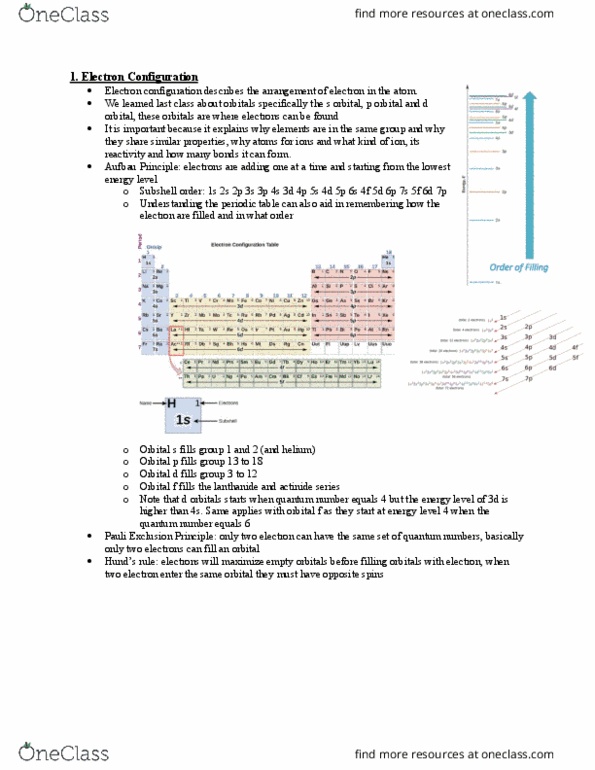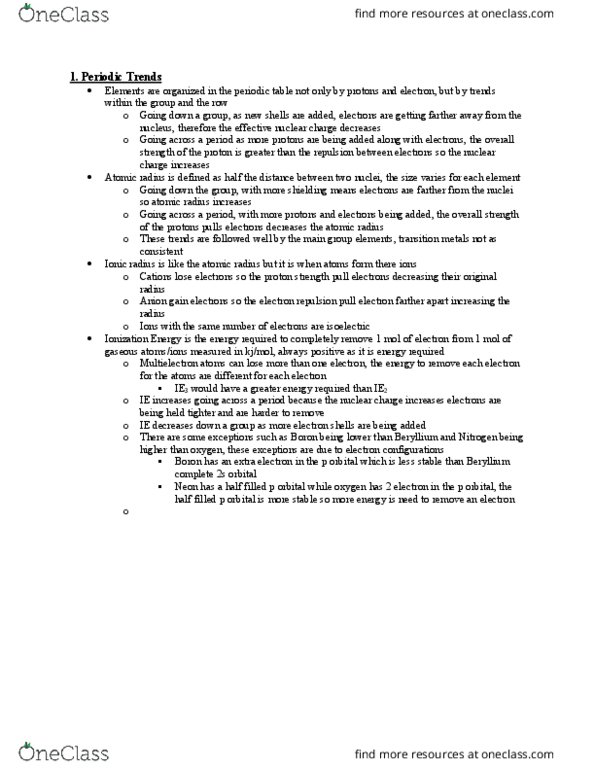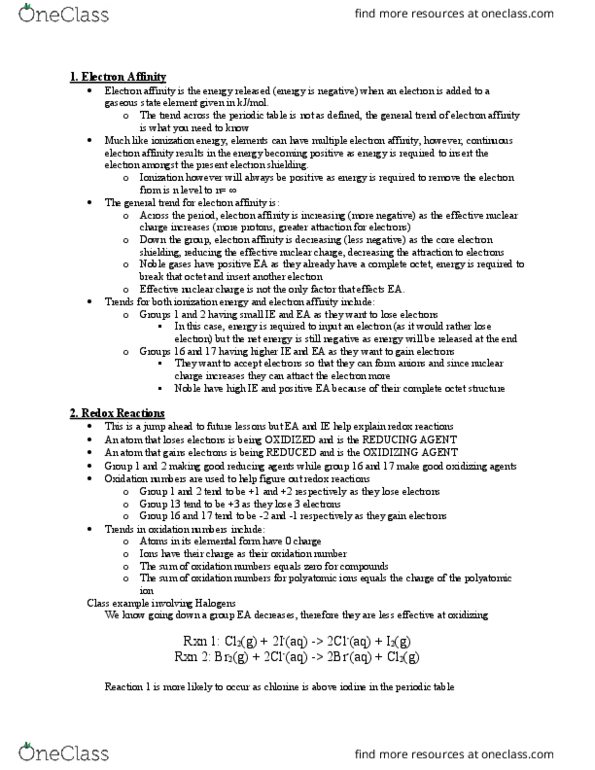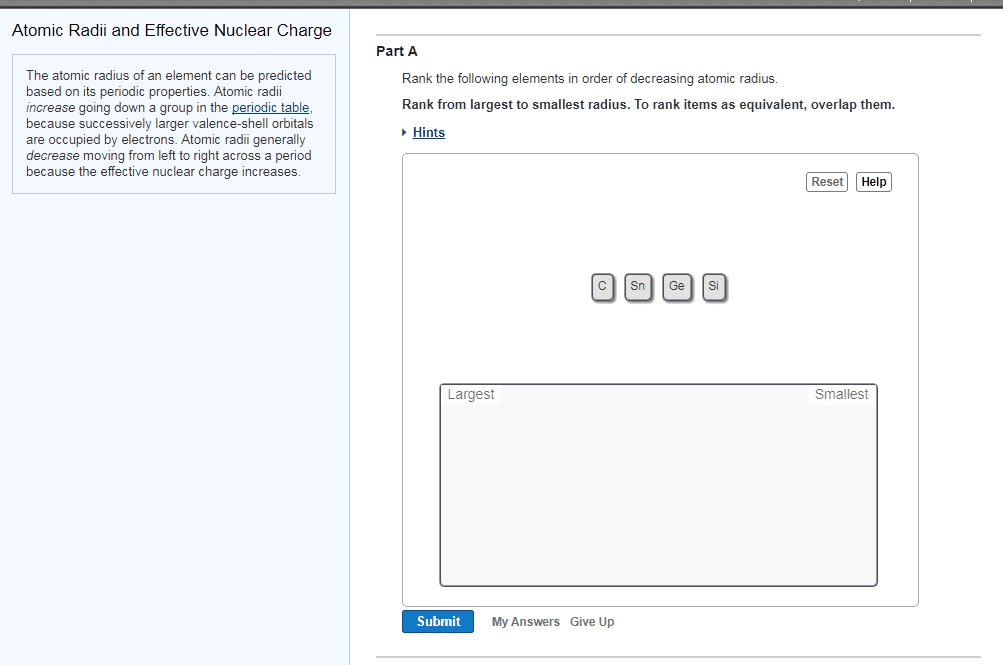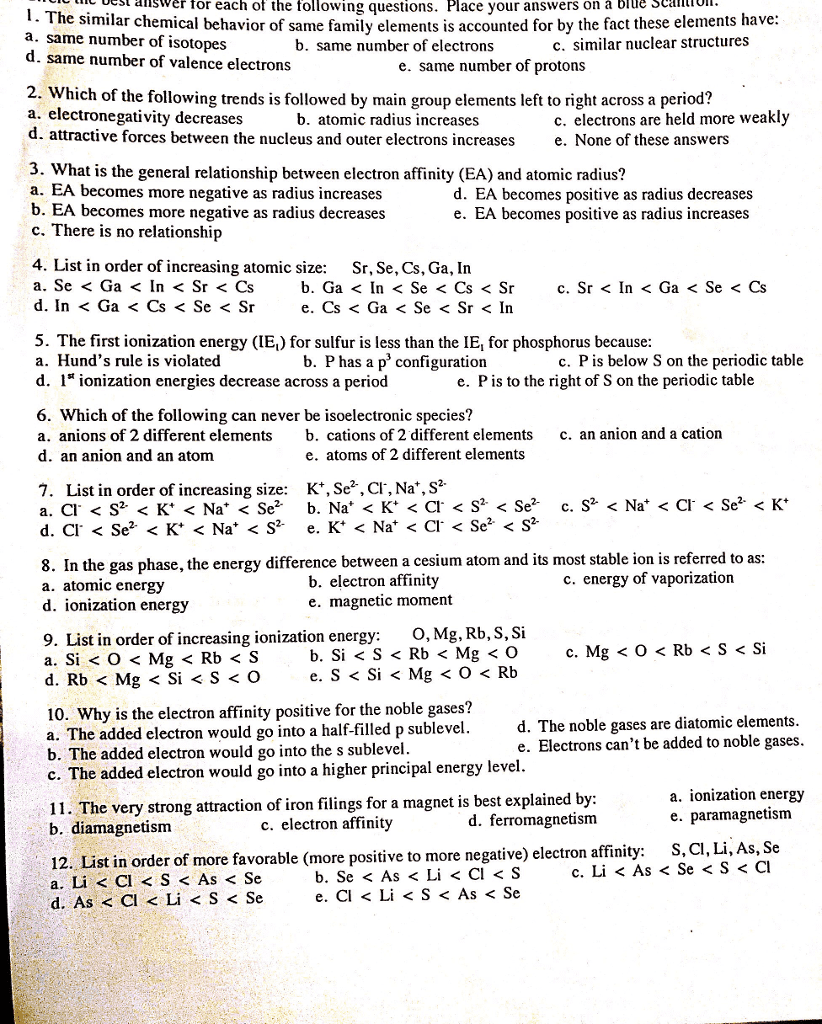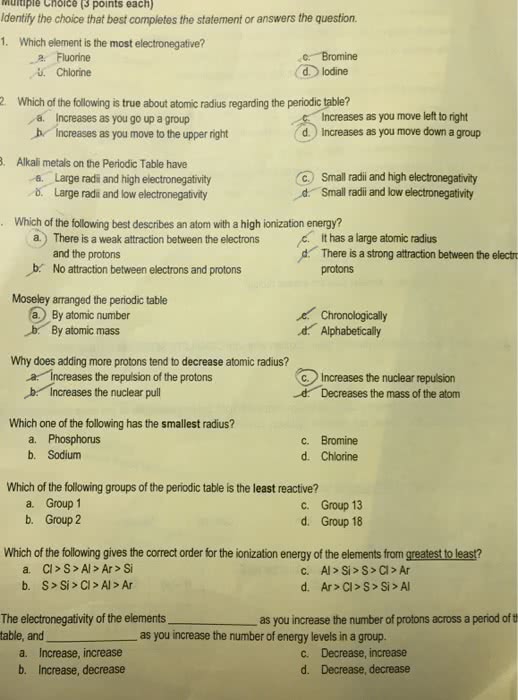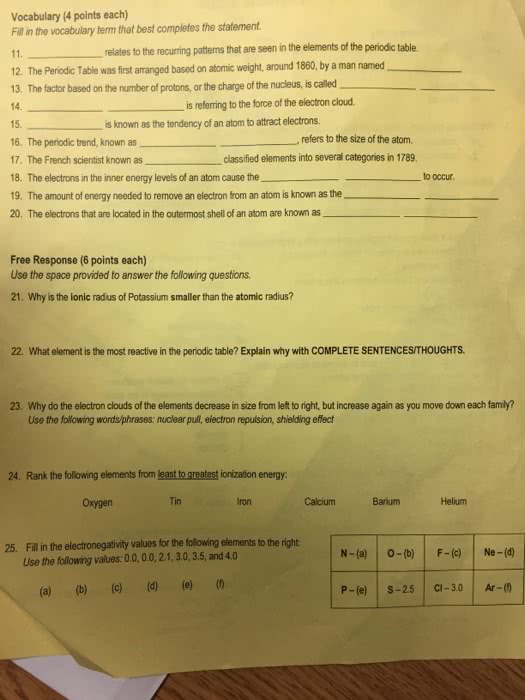CHEM101 Lecture Notes - Lecture 6: Effective Nuclear Charge, Ionic Radius, Beryllium
CHEM101 verified notes
6/8View all

1. Periodic Trends
• Elements are organized in the periodic table not only by protons and electron, but by trends
within the group and the row
o Going down a group, as new shells are added, electrons are getting farther away from the
nucleus, therefore the effective nuclear charge decreases
o Going across a period as more protons are being added along with electrons, the overall
strength of the proton is greater than the repulsion between electrons so the nuclear
charge increases
• Atomic radius is defined as half the distance between two nuclei, the size varies for each element
o Going down the group, with more shielding means electrons are farther from the nuclei
so atomic radius increases
o Going across a period, with more protons and electrons being added, the overall strength
of the protons pulls electrons decreases the atomic radius
o These trends are followed well by the main group elements, transition metals not as
consistent
• Ionic radius is like the atomic radius but it is when atoms form there ions
o Cations lose electrons so the proton strength pull electrons decreasing their original
radius
o Anion gain electrons so the electron repulsion pull electron farther apart increasing the
radius
o Ions with the same number of electrons are isoelectric
• Ionization Energy is the energy required to completely remove 1 mol of electron from 1 mol of
gaseous atoms/ions measured in kj/mol, always positive as it is energy required
o Multielectron atoms can lose more than one electron, the energy to remove each electron
for the atoms are different for each electron
§ IE3 would have a greater energy required than IE2
o IE increases going across a period because the nuclear charge increases electrons are
being held tighter and are harder to remove
o IE decreases down a group as more electron shells are being added
o There are some exceptions such as Boron being lower than Beryllium and Nitrogen being
higher than oxygen, these exceptions are due to electron configurations
§ Boron has an extra electron in the p orbital which is less stable than Beryllium
complete 2s orbital
§ Neon has a half filled p orbital while oxygen has 2 electron in the p orbital, the
half filled p orbital is more stable so more energy is need to remove an electron
o
Document Summary
Ions with the same number of electrons are isoelectric. Ie3 would have a greater energy required than ie2. Ie increases going across a period because the nuclear charge increases electrons are being held tighter and are harder to remove. Ie decreases down a group as more electron shells are being added: there are some exceptions such as boron being lower than beryllium and nitrogen being higher than oxygen, these exceptions are due to electron configurations. Boron has an extra electron in the p orbital which is less stable than beryllium complete 2s orbital.

